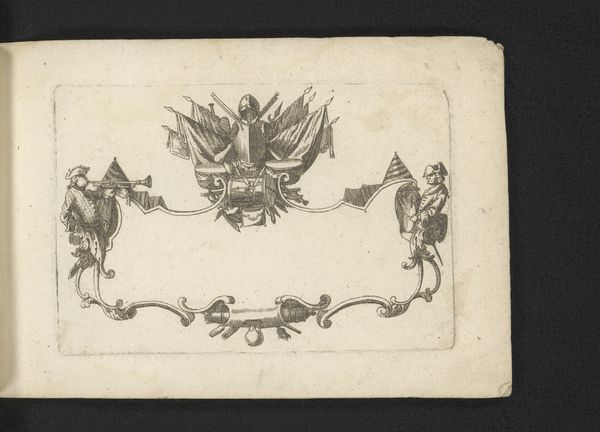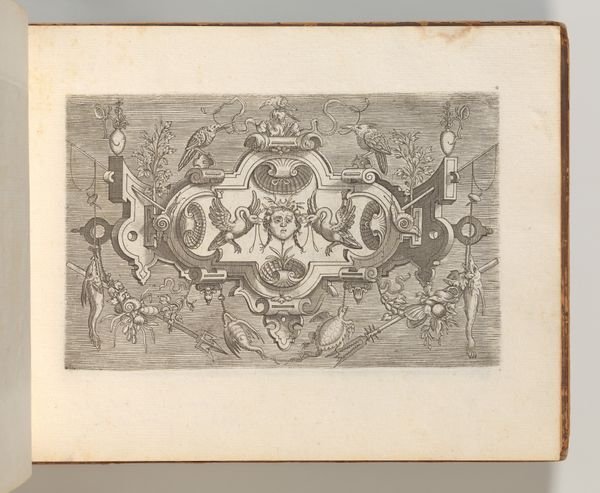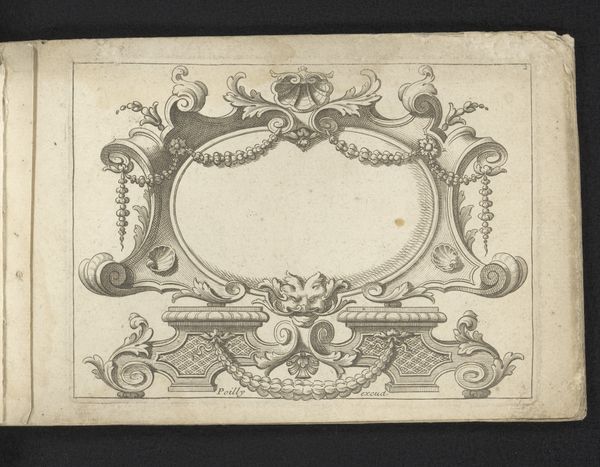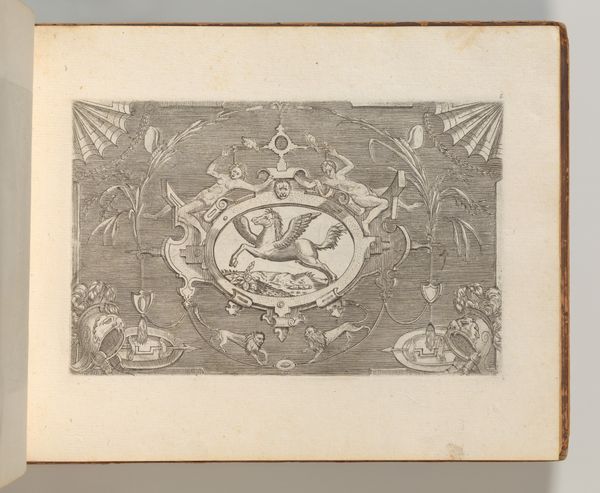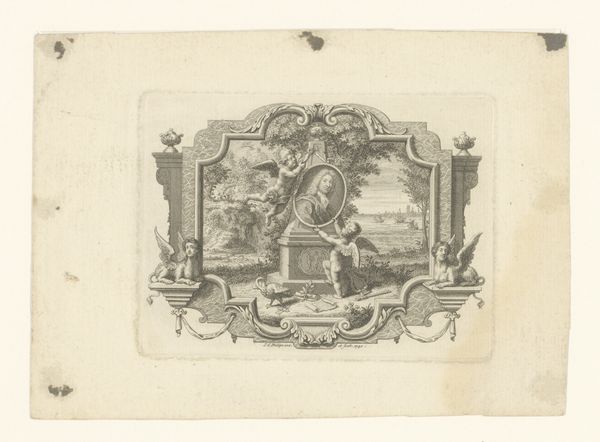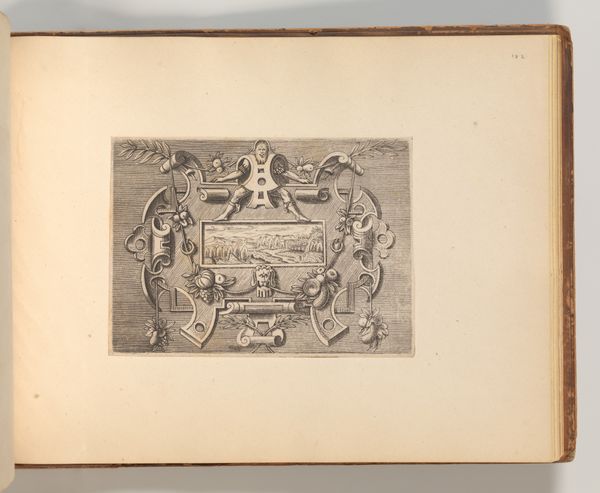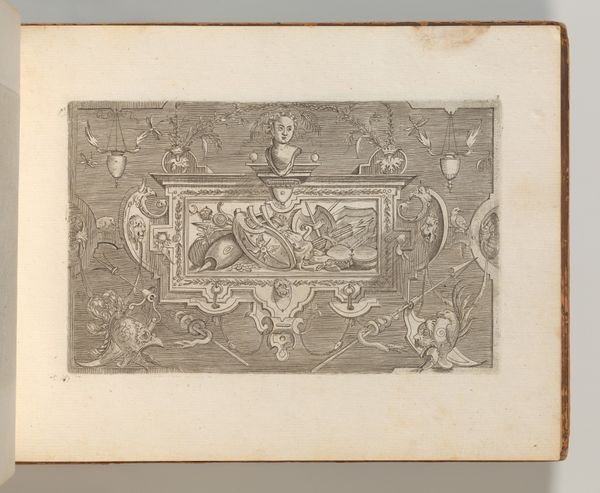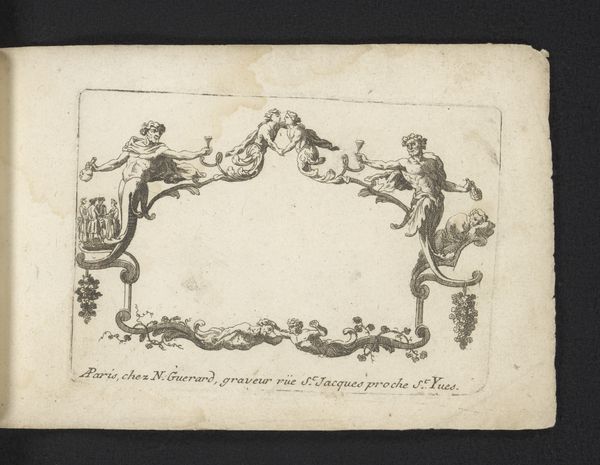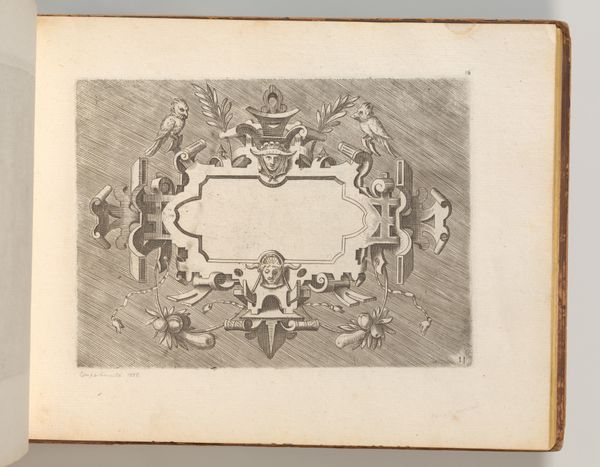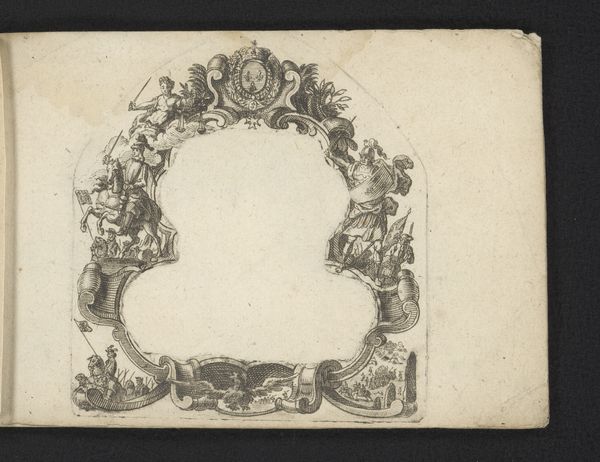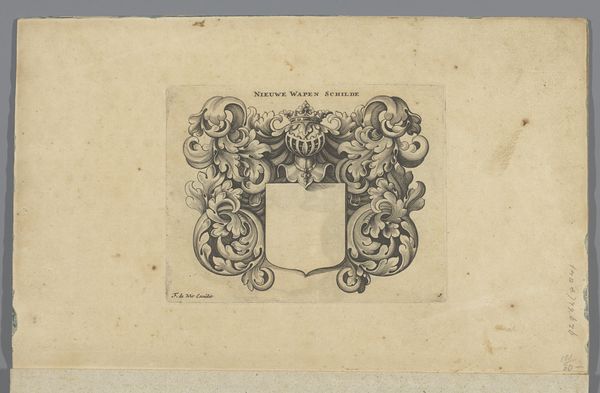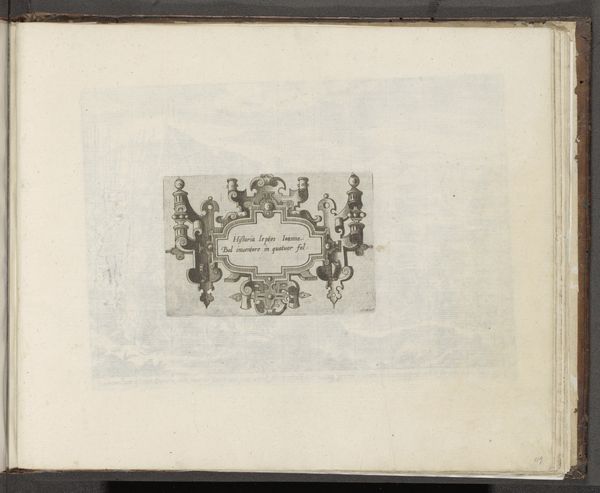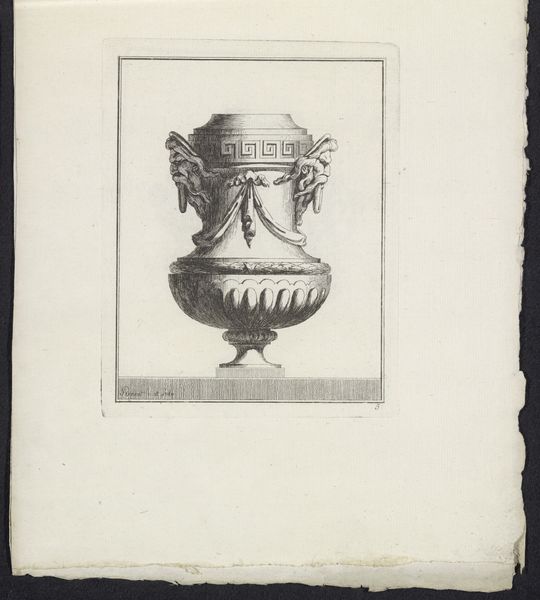
graphic-art, engraving
#
graphic-art
#
baroque
#
line
#
decorative-art
#
engraving
Dimensions: height 93 mm, width 134 mm
Copyright: Rijks Museum: Open Domain
Curator: Here at the Rijksmuseum, we have a piece called "Cartouche met kookpot," an engraving by Nicolas Guérard, dating roughly from 1658 to 1719. Editor: Immediately, it strikes me as a study in power and domesticity, doesn't it? A juxtaposing of war-like arms with imagery tied to the kitchen. There is an empty space for the name in the center of the drawing with decorative lines. Curator: Yes, this engraving operates within a larger framework of baroque ornamentation. The pot overflows above the rifles, and a face under drapery further supports the cartouche with two winged figures with the crown in their hands. Editor: I find myself pondering its use. Who commissioned it? And what meaning would they wish to impart? Are the domestic and military in conflict or harmony here? Curator: Historically, the Cartouche format often signified authority or ownership. The prominence of a cooking pot above military arms suggests perhaps that domestic provisioning—feeding an army, perhaps—is also power. The symbolism underscores a hierarchical structure. Editor: A sharp observation. Perhaps it reflects the multifaceted roles that individuals or even states played, showing the intersections between their various concerns. Was it possibly aimed towards the idea of powerful women that are capable of leadership, domesticity and military knowledge? Curator: It is plausible that the engraving might also hint at those women who provided logistical support. I want to emphasize that domestic provisioning wasn't an explicitly feminine thing. However, these winged creatures bearing gifts with the crowns certainly hints at royalty and privilege. Editor: Food for thought—no pun intended—given today’s sociopolitical discourse around how gender, race, and class impact one’s ability to wield power. It’s almost eerie to see such themes echo across centuries in art like this. Curator: Absolutely, it brings me back to the public function of the work, its power to act as a window into former periods and invite us to reconsider it within our reality. Editor: Well, exploring such intricacies just shows how artworks can constantly provoke novel readings as our perspectives evolve. Curator: Precisely! It's in the continued conversation that its richness surfaces.
Comments
No comments
Be the first to comment and join the conversation on the ultimate creative platform.
